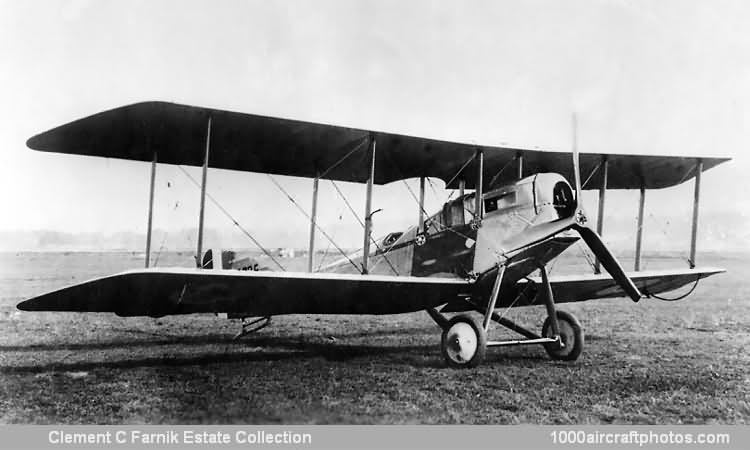"The pictured aircraft is special as it shows a three-bladed propeller, an exceptionally rare construction. At that time, most propellers were two- or four-bladed where a four-bladed propeller was in reality two two-bladed propellers bolted together. The three-bladed propeller identifies it as the prototype Martinsyde G.100, s/n 4735."
Well-proportioned and purposeful in appearance it utilized the normal fabric covered wooden structure of the era but several modifications were embodied in the production machines which appeared during the last days of 1915. The metal cowling over the engine was considerably neater, a two-blade propeller replaced the three-blade one and double flying-wires were installed.
To enable the G.100s forward-firing Lewis gun to be used effectively, it was mounted on the upper center section at a height from which the line of fire would pass over the propeller. The only really unconventional feature about the G.100 was the second Lewis gun carried on a bracket on the port side of the fuselage just to the rear of the cockpit. This very odd arrangement was for the protection of the pilot who was expected to be able to perform the remarkable combined feats of flying the machine and firing blindly behind him with the second gun.
To fulfill its mission as a long-range fighter, the G.100 had been designed purposely as a relatively large biplane with generous wing area to carry aloft sufficient fuel for a worthwhile endurance of 5,5 hours. Consequently in combat it was at a disadvantage compared with smaller, more agile contemporaries.
On reaching the Western Front at the beginning of 1916, the G.100 was allocated to escort two-seaters of various squadrons, No. 27 Squadron, RFC, being the sole unit to be equipped completely with the Martinsyde G.100 and arriving at the battle front on 1st March, 1916. The fact that it was a useful weight-lifter was quickly recognized and the G.100s found themselves soon adapted as bombers.
To the RFC the Martinsyde G.100 became known as the Martinsyde "Elephant" at an early stage in its career. Certainly this was so in No. 27 Squadron, in which the nickname was in general use before July 1916 was out. Its precise origin is uncertain, but it may have been inspired because the aircraft was unusually large for a single-seater and was not so agile as the smaller rotary-powered scouts of the period.
An improved version of the Martinsyde G.100, the G.102, appeared during 1916, benefiting by the extra 40 hp available from its 160 hp Beardmore engine. Experimental armament installations on "Elephants" included one with a Lewis gun to starboard of the cockpit and firing upwards at about 45" through the center section and another which was used during the summer of 1917 in trials with the Eeman gun gear.
The Martinsyde G.100 and G.102 saw active service in France until the end of 1917, and carried out some of their most redoubtable work in the Middle East until the end of WW I. The memory of the "Elephant" has been carried forward as the symbol in the badge of No. 27 Squadron, RAF."
